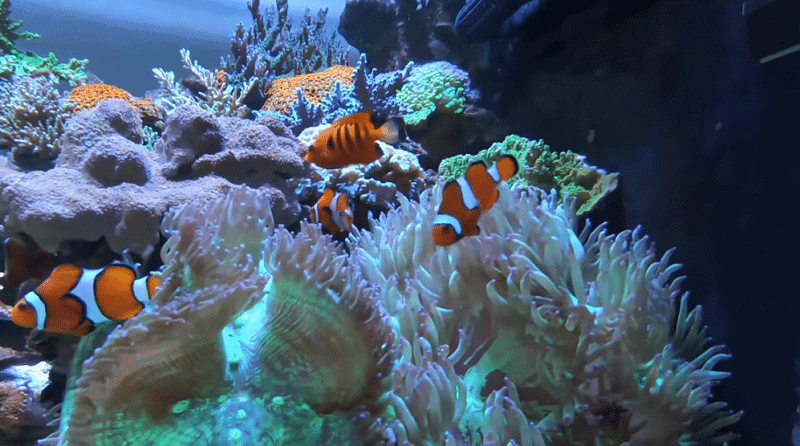Saltwater reef tanks can make a beautiful addition to your home or office, providing a diverse underwater world. However, setting up and maintaining a saltwater reef tank is difficult. Keeping the tank running smoothly and the inhabitants healthy requires time, money, and effort.
What Makes Saltwater Reef Tanks a Challenge?
Picking the Right Equipment
The first challenge is picking the right equipment, which can be overwhelming since many options are available. Important equipment includes a tank, a lighting system, a filtration system, a heating and cooling system, and a protein skimmer. You need high-quality equipment to keep your tank healthy.
Once you have the equipment, the next challenge is creating the right environment. You have to balance the water’s pH, salinity, and temperature, as well as the type of live rock and sand used in the tank. You must also regularly monitor and test the water to ensure the inhabitants stay healthy.

Water Quality
Water quality is another major challenge. You must change the water regularly, monitor for nitrates and phosphates, and remove excess organic matter. Overfeeding can also cause issues with water quality, so you have to be mindful of how much food you provide.
Check out this article on an easy maintenance schedule to keep up your water quality!
Managing water quality is critical, as an aquarium is essentially a box of water. LiveAquaria explains the importance of water changes here.
Disease Outbreaks
Preventing disease outbreaks in saltwater reef tanks is another challenge. You must pay attention to the water quality, good husbandry practices, and maintain a cleaning routine. Additionally, you must be aware of signs of illness in the inhabitants and treat them quickly.
Algae Growth
Algae growth is another challenge. Algae can grow quickly and cause problems in the tank. To prevent excessive algae growth, you have to monitor the levels of nitrates and phosphates and adjust feeding and maintenance routines accordingly.
A properly stocked clean-up crew will clean the tank before a problem starts. If you wait until you have algae blooms to add your clean-up crew, you will be disappointed with the results.
Check out my guide on the best clean-up crew for a reef tank.
Overstocking
It’s also important to avoid overstocking saltwater reef tanks, which can lead to poor water quality and health issues for the inhabitants. You must choose the right tank size and gradually add new inhabitants.
Maintenance
Maintaining saltwater reef tanks is a challenging yet rewarding endeavor. This mini-ecosystem requires constant vigilance, attention to detail, and a willingness to adapt to thrive.
One of the main difficulties in maintaining a saltwater reef aquarium is achieving the appropriate water chemistry. Salinity, pH, alkalinity, calcium, and magnesium levels must all be carefully monitored and adjusted to support the needs of the coral, invertebrates, and fish inhabiting the tank. Fluctuations in these parameters can result in stress or even death for the delicate organisms that call the aquarium home.
Livestock compatibility is essential to prevent aggression or resource competition. Quarantining new arrivals is crucial to avoid spreading disease or parasites.
Ensuring the tank’s inhabitants are well-suited to coexist requires extensive research and planning. Furthermore, the introduction of new organisms can be a precarious process.
Lighting, temperature, and water flow must also be meticulously controlled to simulate the natural conditions of a coral reef. These factors contribute to the growth and health of corals, as well as the overall success of the aquarium.
It is Expensive!
Maintaining a saltwater reef tank is also expensive, with initial setup costs and ongoing expenses for equipment, food, and maintenance supplies. There may also be unexpected expenses, such as equipment repairs or disease outbreaks.
Despite the challenges, maintaining a saltwater reef tank can be very rewarding. Watching the inhabitants thrive and interact can be a source of enjoyment, and the beauty and diversity of the tank can be inspiring.
Check out my article that shares an Easy Quick Start Reef Tank Guide to setting up your reef tank.